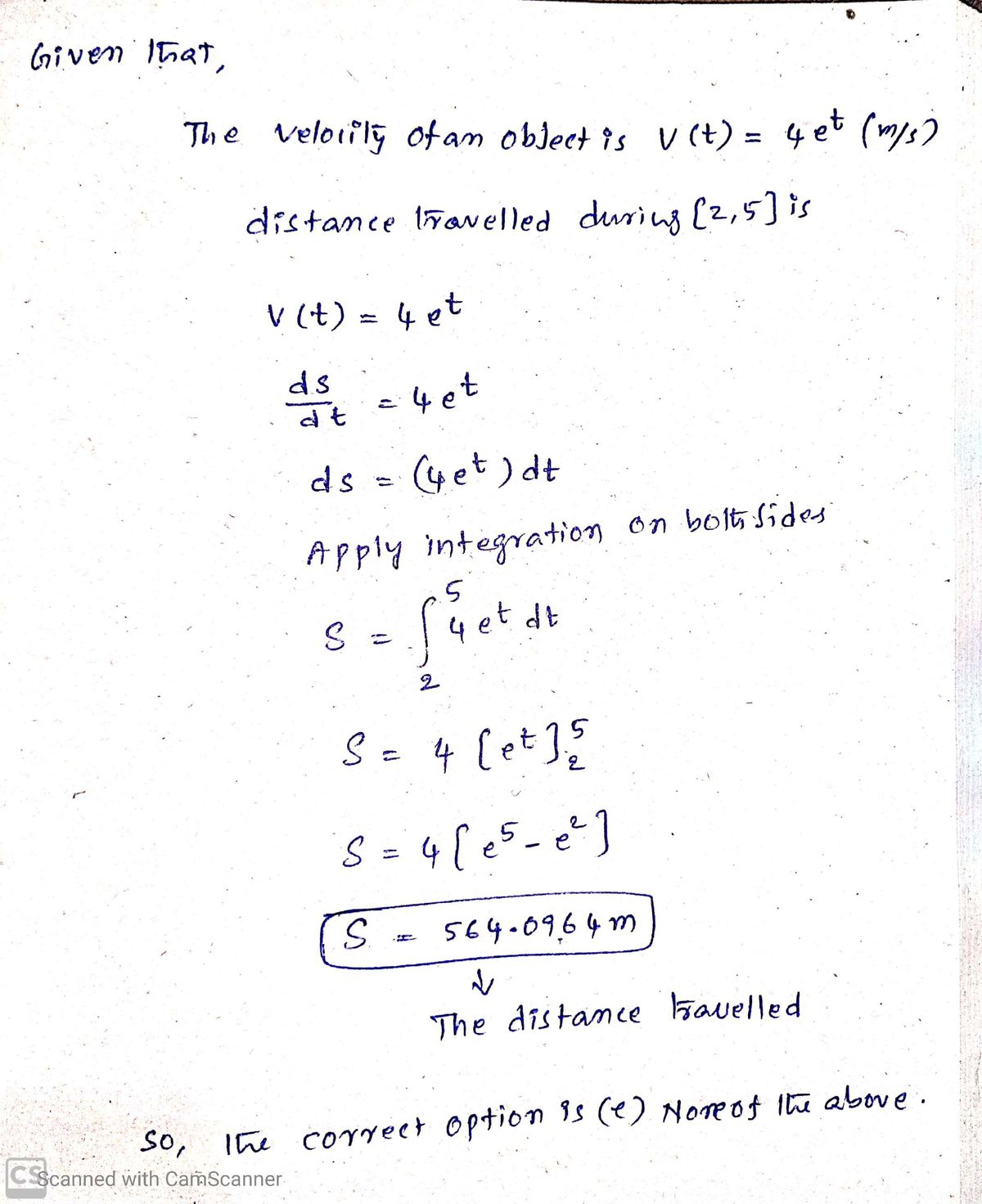2. The velocity of an object (in m/s) is given by v(t) = 4e' where t is time in seconds. Estimate the distance traveled by the object on the interval [2,5] using two subintervals of equal width and left endpoints. Round your answer to four decimal places if necessary. (a) 162.0180 meters (b) 486.0541 meters (c) 1133.5060 meters (d) 1089.1717 meters (e) None of the above
Displacement, Velocity and Acceleration
In classical mechanics, kinematics deals with the motion of a particle. It deals only with the position, velocity, acceleration, and displacement of a particle. It has no concern about the source of motion.
Linear Displacement
The term "displacement" refers to when something shifts away from its original "location," and "linear" refers to a straight line. As a result, “Linear Displacement” can be described as the movement of an object in a straight line along a single axis, for example, from side to side or up and down. Non-contact sensors such as LVDTs and other linear location sensors can calculate linear displacement. Non-contact sensors such as LVDTs and other linear location sensors can calculate linear displacement. Linear displacement is usually measured in millimeters or inches and may be positive or negative.
![**Problem 2:**
The velocity of an object (in m/s) is given by \( v(t) = 4e^t \) where \( t \) is time in seconds. Estimate the distance traveled by the object on the interval \([2,5]\) using two subintervals of equal width and left endpoints. Round your answer to four decimal places if necessary.
- (a) 162.0180 meters
- (b) 486.0541 meters
- (c) 1133.5060 meters
- (d) 1089.1717 meters
- (e) None of the above](/v2/_next/image?url=https%3A%2F%2Fcontent.bartleby.com%2Fqna-images%2Fquestion%2Fc7632b8b-cf59-4c43-8cbd-0b856253f09c%2F5ba8a2d9-f59c-45ec-8a2a-1fb7ed987130%2F5dec3a_processed.png&w=3840&q=75)

Step by step
Solved in 2 steps with 1 images









